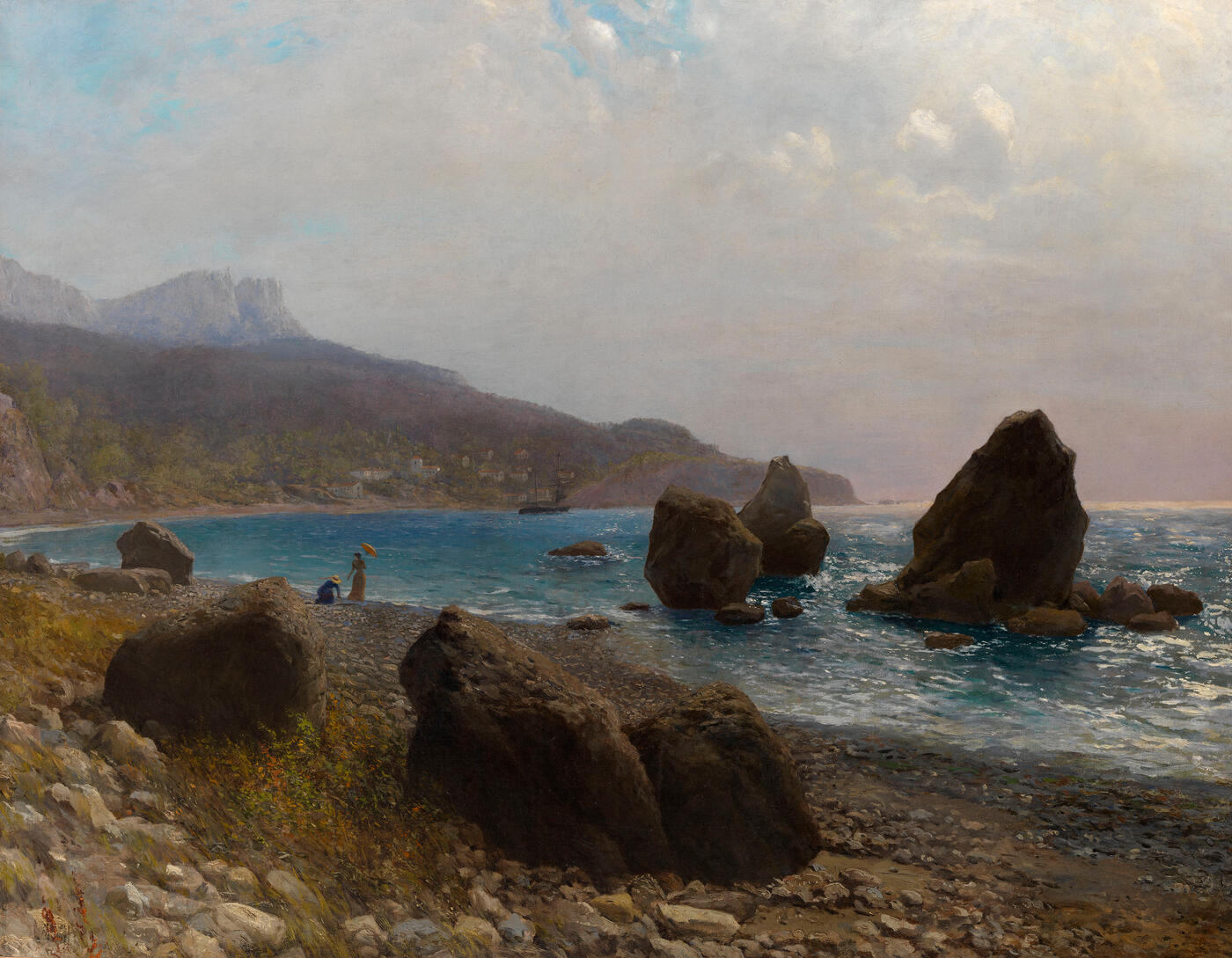MacDougall's Russian Art Auctions 1 December 2011
1 December 2011

* 21. LAGORIO, LEV (1827-1905)
Sea Shore. Crimea, indistinctly signed and dated 1891.
Oil on canvas, 97.5 by 125.5 cm.
250,000-300,000 GBP
Provenance: Private collection, Europe.
Authenticity of the work has been confirmed by the expert V. Petrov.
Authenticity of the work has also been confirmed by the expert N. Ignatova.
Sea Shore. Crimea dates from Lagorio’s mature period. During this period, he remained consistently Romantic in style, capturing hues in the natural environment evocative of moods and feelings. In the 1890s his work was distinguished by an ability to combine the immediacy of an on-the-spot study with the artifice of colour effects in the best traditions of Romantic and Academic landscape painting. It is the very compositions that included people strolling along the beach which marked the highpoint of Lagorio’s genre landscapes, combining the polish and tranquillity of the Italian school with a more Russian, psychological element.
Lagorio — who was among the most talented of the 19th-century landscape, seascape and battle artists — had a special love of the Crimean coast, for he was born in Feodosia, into the family of the Neapolitan Vice-Consul. His childhood on that coast, together with the direct influence of Aivazovsky, who lived nearby, would determine Lagorio’s artistic credo throughout his life. In the late 19th century the Crimea became a Mecca for many Russian artists, having replaced their beloved but distant Italy. His main subject was the seashore and in portraying it he attached particular significance to the rendering of light, aerial perspective and water in its various states. After graduating from the Imperial Academy of Arts, from the class of Maxim Vorobiev and Bogdan Villevalde, and completing a study tour of Europe, he even took a studio for himself in Sudak, where he would often
spend the summer months.
Sea Shore. Crimea resembles Lagorio’s typical compositional and artistic devices. The rocks are depicted in an extremely realistic way and the strolling couple is typical of Lagorio’s use of staffage in Crimean landscapes. The painting is executed with all the distinctive traits of the artist’s best works — a strong basic composition, decorative but true colouring and effective lighting — and can be considered his benchmark work.
When Lagorio painted the present work he was already a revered professor of the Academy of Arts and had behind him hundreds of coastal views which were highly rated by his contemporaries, yet he was still able to preserve a certain freshness in his impression and a sincerity of feeling in his Crimean landscapes. His coastal views, joyous, sunny, animated by a sailing ship on the horizon, by a boat coming in to moor or elegant figures taking a stroll, were so popular with the local high society that the artist decided to devote the whole of his 1893 solo exhibition to landscapes of the Crimea’s southern coast.
It was these Crimean works that constitute the lion’s share of the artist’s output, which have come down to us. Certainly, the catalogue for his memorial exhibition, organised in 1906 by Lagorio’s admirers in St Petersburg, lists many views of Kuchuk-Lambat, Yalta, Simeiz, Feodosia, Alushta, Sebastopol and the surroundings of Sudak: Sea Shore. Crimea might well be hiding behind one of their rather uninformative titles.
Notes on symbols:
* Indicates 5% Import Duty Charge applies.
Ω Indicates 20% Import Duty Charge applies.
§ Indicates Artist's Resale Right applies.
† Indicates Standard VAT scheme applies, and the rate of 20% VAT will be charged on both hammer price and premium.